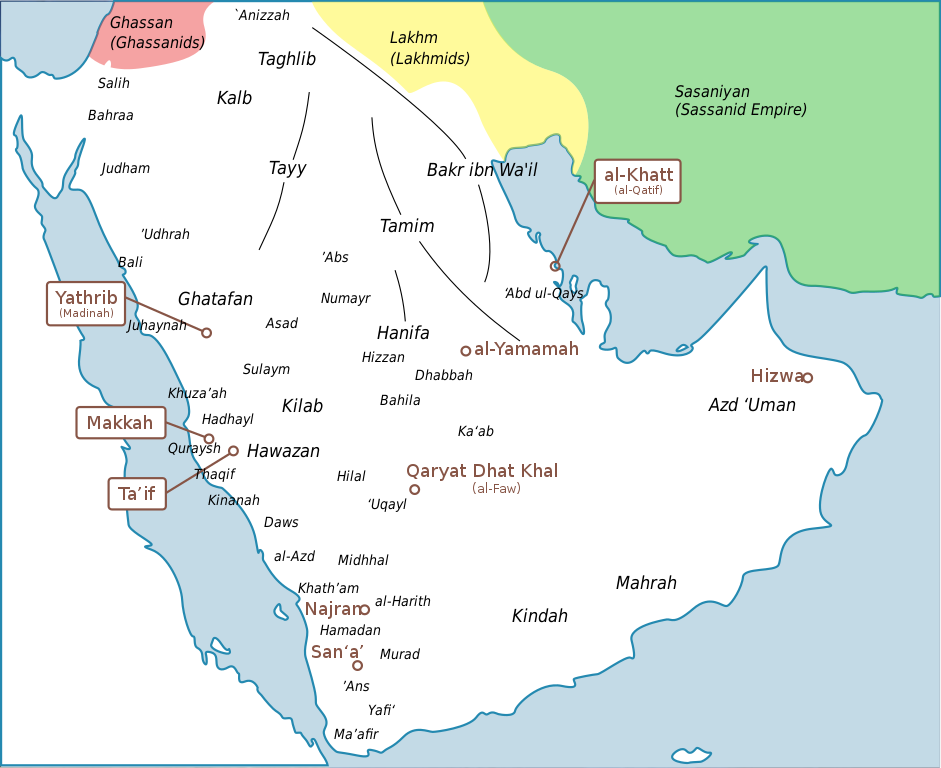The Adnan Tribe is one of the oldest and most influential tribes in the Arabian Peninsula. Their roots can be traced back to pre-Islamic times, and they have played a significant role in the region’s cultural, political, and economic development. This article aims to provide a comprehensive overview of the Adnan Tribe’s history, culture, and traditions, as well as the challenges they face in contemporary society.
[Read about Arabian Tribes]
Historical Background of the Adnan Tribe
Adnan (Arabic: عدنان, romanized: ‘adnān) is the traditional ancestor of the Adnanite Arabs of Northern, Western, Eastern and Central Arabia, as opposed to the Qahtanite Arabs of Southern Arabia who descend from Qahtan. His ancestry can be traced back to Abraham and from there to Adam and Noah.
The Adnan Tribe is named after Adnan, the descendant of Ismail, the son of Prophet Ibrahim. They originated from the Arabian Peninsula and later migrated to the Levant and Mesopotamia. Before the advent of Islam, the Adnan Tribe was one of the most influential tribes in Arabia and played a crucial role in the political and economic landscape of the region. After the spread of Islam, the Adnan Tribe became known for their contributions to the Islamic faith and culture. Today, the Adnan Tribe is spread across different countries, including Saudi Arabia, Yemen, Oman, and Iraq. Adnan Tribe is also known as Adnanites.
Cultural Practices and Traditions of the Adnan Tribe
The Adnan Tribe has a rich cultural heritage that is steeped in tradition. One of their most significant cultural practices is the Bedouin lifestyle, characterized by nomadic herding, camel breeding, and living in tents. The Adnan Tribe is also known for their hospitality, and they take pride in hosting guests and visitors. Their traditional clothing includes the thobe, a long, flowing robe worn by men, and the abaya, a long, black dress worn by women. The Adnan Tribe also has a unique dialect of Arabic that is distinct from other dialects spoken in the region.
Significance and Role of the Adnan Tribe in Contemporary Society
Despite their rich cultural heritage, the Adnan Tribe faces significant challenges in contemporary society. Many members of the tribe struggle with poverty, lack of access to education, and limited employment opportunities. The Adnan Tribe also faces discrimination and marginalization in some countries, particularly in Yemen and Iraq. Despite these challenges, the Adnan Tribe continues to play a significant role in the cultural and economic development of the Arabian Peninsula. They are known for their contributions to the arts, literature, and music, and their traditional knowledge of camel breeding and herding continues to be valued in contemporary society.
Contemporary Challenges Facing the Adnan Tribe
One of the most significant challenges facing the Adnan Tribe is the loss of their traditional way of life. Many members of the tribe are no longer able to practice their traditional Bedouin lifestyle, and their unique dialect of Arabic is also at risk of extinction. The Adnan Tribe also faces challenges related to access to education and healthcare, and many members struggle with poverty and unemployment.
The Future of the Adnan Tribe
Despite the challenges facing the Adnan Tribe, there is hope for their future. Efforts are being made to preserve their cultural heritage, including the revival of their traditional dialect of Arabic and the promotion of traditional arts and crafts. Governments in some countries are also investing in programs to improve education and healthcare for the Adnan Tribe. With continued efforts to preserve their cultural heritage and improve their living conditions, the Adnan Tribe can continue to play a significant role in the Arabian Peninsula’s cultural and economic landscape.
Overall, the Adnan Tribe is an essential part of the Arabian Peninsula’s cultural and historical heritage. Despite the challenges they face in contemporary society, their cultural practices and traditions continue to be valued and celebrated. By understanding their history and culture, we can appreciate the Adnan Tribe’s legacy and contributions to the region’s development.
Bibliography
- Al-Qasimi, S. (2016). The Adnan Tribe: History, Culture, and Society. Ministry of Culture and Knowledge Development.
- Al-Sharhan, S. (2018). The Adnan tribe: A history of resilience and survival. Journal of Arabian Studies, 8(2), 193-209.
- Zahrani, M. A. (2013). Social, economic and political life in the Kingdom of Saudi Arabia: A case study of the Adnan tribe. Arabian Journal of Business and Management Review, 3(4), 39-49.
- Van Gelder, G. J. H. (2008). The Adnani dialects and Arabic dialectology. In Arabs and others in early Islam (pp. 51-76). Brill.
- Al-Homoud, M. S. (2012). Cultural heritage preservation in the Kingdom of Saudi Arabia: The case of the Adnan tribe. International Journal of Heritage Studies, 18(6), 545-556.



 For all latest articles, follow on Google News
For all latest articles, follow on Google News